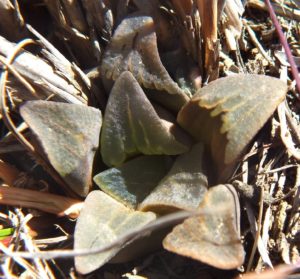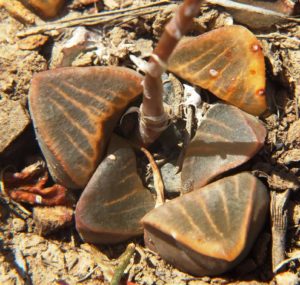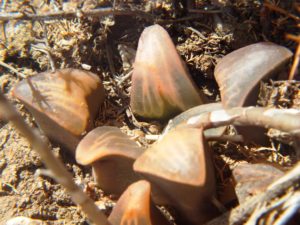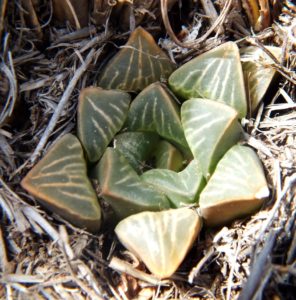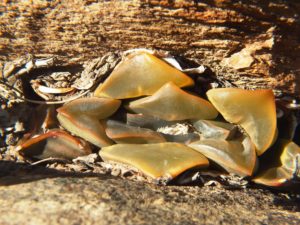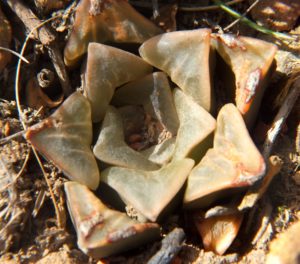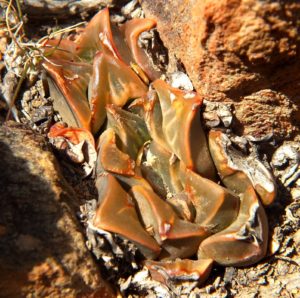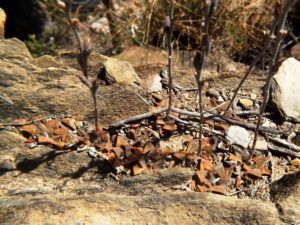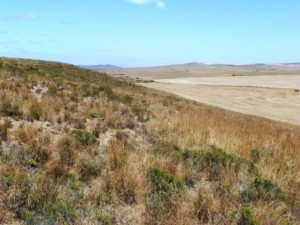62. 2019.7.21 – Going away to the west southwest is Haarwegskloof – one of those conservation areas by default, as it was too difficult to grind down to make a wheat field. Jannie Groenewald was manager there. In dealing with this issue of “groenewaldii” and my present hypothesis, there is no intention to do anything but respect and applaud his genuine interest and competence as a naturalist par excellence. The problem at Haarwegskloof is that H. retusa (turgioid), H. mutica and H. mirabilis (as possibly 3 different heidelbergensisoids) are present. I concede that it will be nearly impossible to convince any botanist that these are all the same one species. But I have so far presented only about one tenth of the raw evidence, if as much as that, of the fact that this is a very probable truth. At Haarwegskloof, we have H. variegata just a short way away, that strange form of it in the limestones a bit south, and no Tulista? Even H. rossouwii could pitch up nearby. I am not at all sure what the geology of the area is. It is within a series of inselbergs in Area 1 (our map) NW Bredasdorp. There is much shale and quartz in the area. The mutica there is pretty average for what would generally pass as this “species” and you can just look at the variants and see that even here there are divergences. Again I happen to have two sets of images from 2011 but just a month apart. I can’t explain why there is just one inflorescence prominent in the pictures as flowering time should have been October about when the pictures were taken.

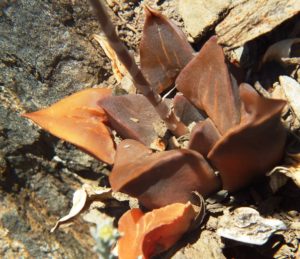
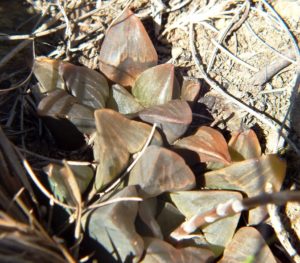
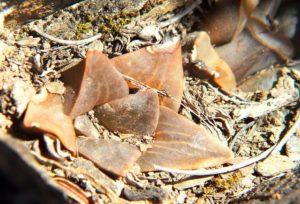

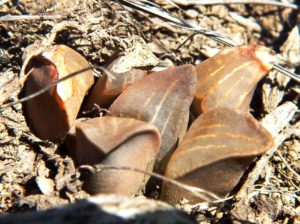

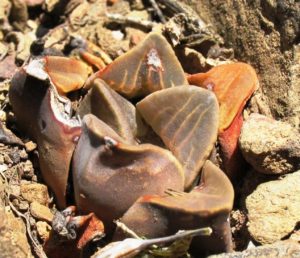
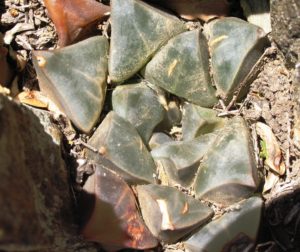
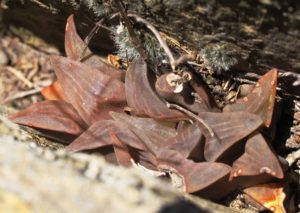
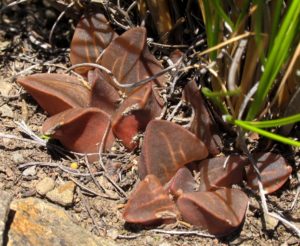
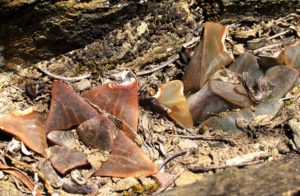
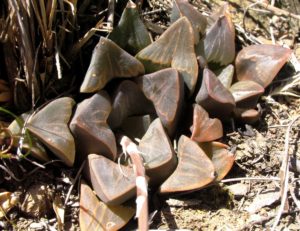
63. 2019.7.22 – Time is short and I am anxious to move on. Still Haarwegskloof and same general place a month later. I so wish I could just drop the whole lot down in one shot like a reinforced block of concrete. One population after another setting into one solid argument. I have too often found in Haworthia that I start putting an argument together point after point. Agreement all the way until 4th or 5th when I find the communicant has forgotten what the first two were that were agreed upon. End of discussion and no end result bar more confusion and disagreement. With writing it has been much the same. As if readers do not read and look at the pictures instead with conviction they know from that what the message was. The area around Haarwegskloof is studded with heidelbergensoid mirabiloids and I shudder to think that I had forgotten about the complexity of the area east of the Potberg. I do not think our map even covers it. That alone is a killer.

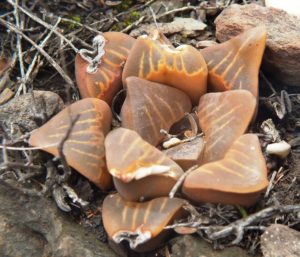
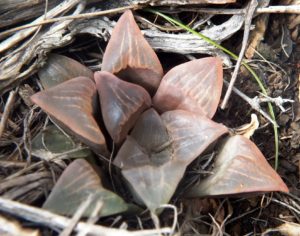
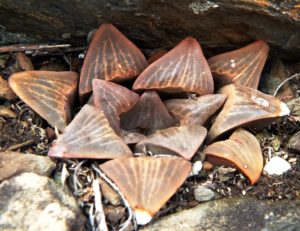
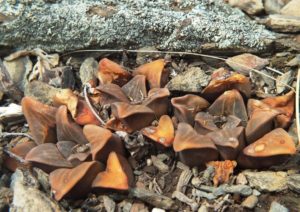
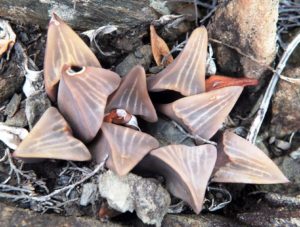
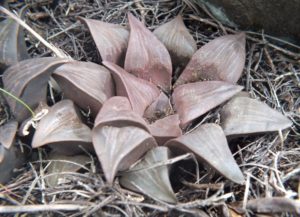
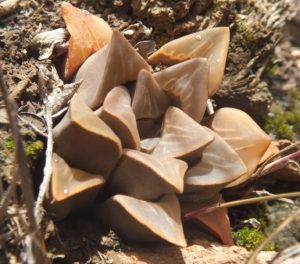
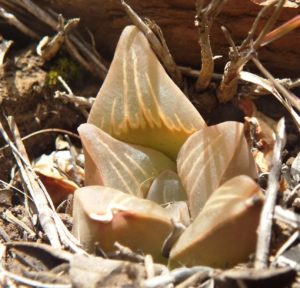
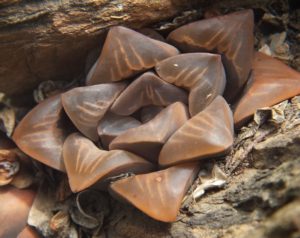

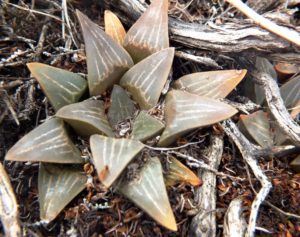
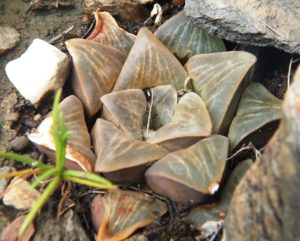
64. 2019.7.22, MBB7934 – October. South of Haarwegskloof and looking towards the limestones of De Hoop. I wish I could will slip in a picture of the variegata-like thing there just to hint that there is another can of worms to open. Problem is that was before the days of digital cameras and my mountain of evidence is only a tip of an iceberg. But no problem for taxonomists. As they say – do not confuse me with the facts. New species, new species, new species. Our succulent journal editors have nothing to worry about as there will always be something to fill the pages and please subscribers? Growers will be wondering how they can get sticky fingers on these? Nature conservation will be wondering how they can stop the army of pilferers. I sympathise with them all as it is a wonderful and enchanting creation just as it is meant to be. That house was occupied and people lived there in 1970 when I first wandered around in that area – a sad truth was the disappearance of the small farmers.

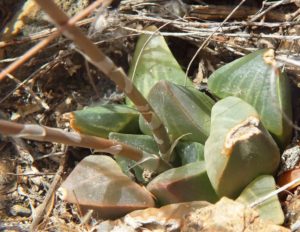
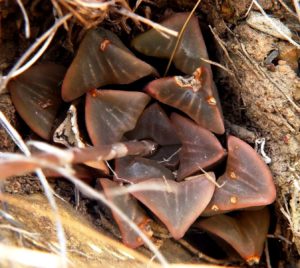
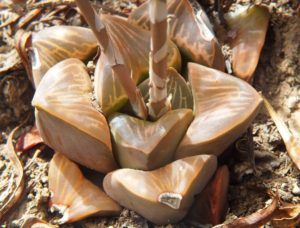


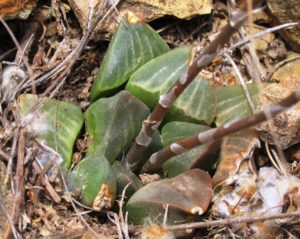
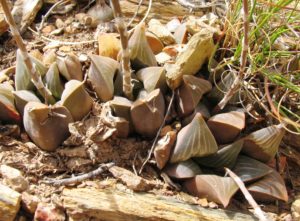

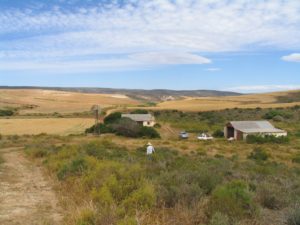

2019.7.24 – My view on conservation is that we can respect the gems and try to conserve them, but the essence is conserving the system that produced them. Every population has something in it that may be special. Recognising my own limitations, here is a diagram of the Southern Cape depicting the species hypothesis as simply as I see it i.e. H. mirabilis and H. retusa as a common gene pool between the Gouritz and Breede Rivers. H. floribunda does unquestionably intrude. This really complicates the issue because H. floribunda has its own connections to H. variegata, H. chlorocantha and H. parksiana. The interpretation of sequencing simply has to take account of these realities of geographic association and continuity. In my association with DNA researchers they have simply failed to address the issue as I have explained it to them. It has been suggested that the technology used is not separating the elements that it should. Thus the assumption is that the existing classification used to draw samples is adequate and that it is only a fine tuning and refinement that is needed. Further that “next generation sequencing” will produce a better answer. The truth may simply be that the sequencing is based on a poorly generated hypothesis and that the concept of species is based on a very weak definition. Question mark. ;)
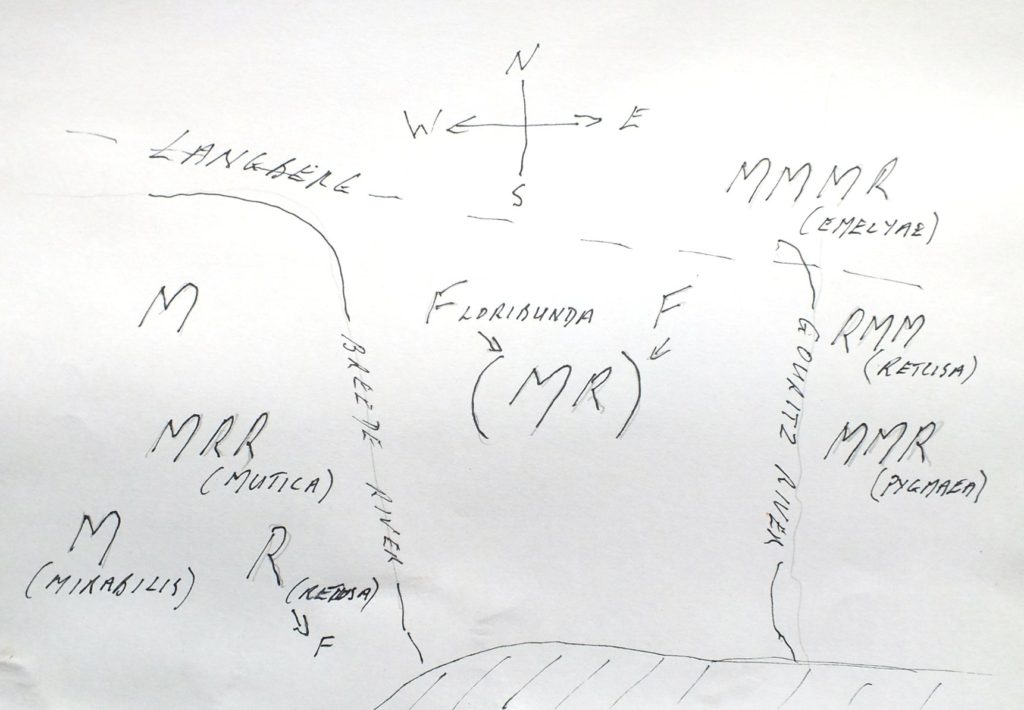
Don Kirkwood, (Stellenbosch University Botanical Garden – US Botaniese Tuin ): Putting aside his (Jannie Groenewald) personal connection, I do think that whether the species is valid or not, there is a case to be made for “groenewaldii” being as distinct from mutica as mirabilis or pygmaea, including distinct separate flowering time where it is near other mutica from what Jannie says and what I’ve also seen.
But I’m no taxonomist or Haworthia expert at all – I’ve worked in landscape conservation most of my career – so want to make the more general plea for the community to err on the side of delineating and red-listing at least subspecies level if the variation does represent a consistent and separate type, especially if there are breeding barriers from flowering time. I think the poaching is driven by more aesthetics than formal nomenclature, and land use and protected area decision making is underpinned by targets that must be at least subspecies level. I’m obviously not pushing for rubbish taxonomy, but if there is any doubt, it makes sense to err on the side of delineating at least to subspecies level.
Bruce Bayer: Thanks so much Don – if you have read all my posts I am sure you must see that this is exactly what I am on about and where I am heading. Every haworthia population contains something genuinely different. What is the difference between 600 species and 600 subspecies? I have specifically addressed the flowering time issue and explained how it relates to the whole system. Has Jannie explained that there is a similar plant on the other side of the river and in the Bontebok Park as well? Is that not groenewaldii? He is perfectly welcome to post his views in the context of all my posts. We have had many discussions. See my latest post about conservation and system. I was instrumental in the initiation of the red data listing and see a serious problem with conservation by “concern”. Please look at the earlier post re system here and I really welcome comment.
I do not want to be distracted by a problem even more vexatious than classification i.e. conservation. But I live in Fisherhaven and see how conservation is applied to virtually only designated reserves. Other open green space is at the mercy of Environmental Impact assessment and whether or not conservation principles make any difference to outcomes. There are many open green spaces in and around the village grossly impacted by alien vegetation. These green spaces in reality have no conservation status whatsoever despite being on the Bot Estuary margin, and in the Kogelberg Biosphere. There is no floristic data to support any conservation issue largely because no Red Data species are apparently present. It amounts to the fact that this is an area of least concern based on non-existent data? It is a nodal point for 4-5 vegetation categories.
Lawrence Loucka: Setting aside not having a definition for ‘subspecies’ it is important how we classify and name things. H. groenewaldii certainly has become recognizable, and has entered the vernacular. What is wrong with recognizing this thing as H. mutica var. groenewaldii and accepting that it is highly variable and can be indistinct. Please explain.
Bruce Bayer: Again Lawrence, this is not my terrain as I am on about the species issue where there also is not a definition? If a conservation argument occurs someone can do this and argue for the fact that this mutica variant is distinctive. But no argument based on a single species or subspecies will do much unless the threat is better identified and supported by other stuff. Is it east bank or west bank? East bank – does it have anything else of conservation concern (this itself is problematic). West bank more important but Bontebok Park is already there – does it need expansion? But is conservation by designated reserves or by general environment? Then we also look at floribunda and say all those oddities in and around Swellendam need some sort of conservation status. What criteria are used to place a mutica variant over a floribunda variant. Can I point out that one of our A-rated scientists confided in me that “Conservation biology is in a mess.” Can we resolve it here? My observation just by recent local experience is that environmental conservation outside designated reserves is in a crisis of monumental proportions. Debating one species vs subspecies – does it have any significance? How do I persuade a botanist that so many of these Fisherhaven species need some sort of taxonomic recognition to make the place conservation worthy. There is a new Oxalis species here, Leucodendron has significant variants, Serruria, do we have adscendens or rubricaulis? What is this thing we cant identify to species level, a Lachnaea? Is this small form of Protea scolymocephala insignificant? How important is leucodendron linifolia? Just how accurate is the red data list???? Haworthia is significant because it has been so thoroughly researched beyond that for so many other genera – and by many taxonomists. Eriospermum for example has had one researcher in the last 40 years. Who actually knows a simple genus like Asparagus? Lobelia? Is even Erica actually understood or is it solely the taxonomic preserve of one man who has spent his entire life working on it. If he did finish, is the genus he started with, still the same today?
65. 2019.7.24, MBB7937 – Still further east is/was this remnant population (ADH2729) showing how remnant skeletal habitats crucial to the survival of these plants, are slowly degraded. On the conservation scale it is of least concern when it is these skeletal habitats and low rainfall that give us anything to conserve at all. Elsewhere in area 1 you can find sheer ecological deserts from skyline to skyline.
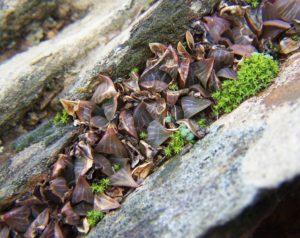
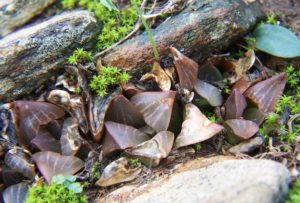
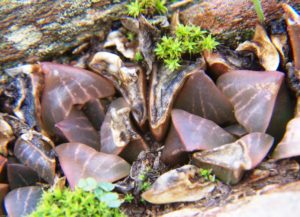
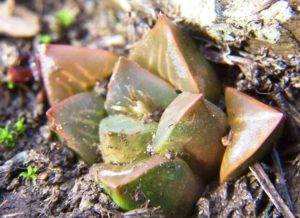
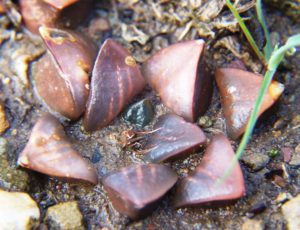
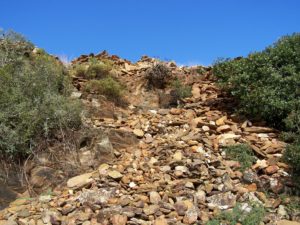
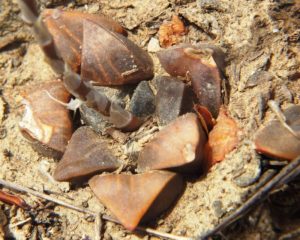
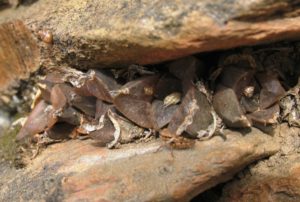
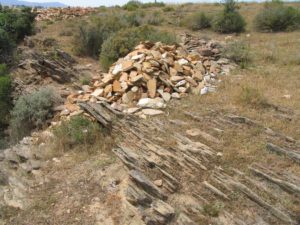
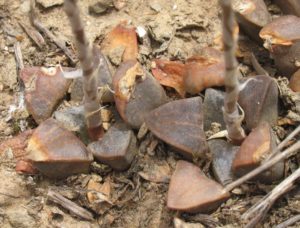
66. 2019.7.9, MBB6941 – Just a bit north now. Amazing co-incidence with the threat to and destruction of “groenewaldii” on east bank of the Buffeljags river. It was brought to my attention by a consultant while doing an Environmental Impact Assessment. A wonderful population of H. mutica on a shale ridge that I identified for him. He reported back that OK he would recommend they move the proposed borrow-pit (quarry for road materials) back a bit to save it. I am very hesitant to go back and check again to see if the recommendation was ever implemented. This is a fundamental problem (or at least one of the problems) of the conservation process even if mutica was a double red-listed species. My own experience is that it is extremely unlikely that any recommendation is ever truly honoured, implemented and monitored. Although, there is great hope for “groenewaldii” still on the Buffeljags River west bank. ♦

